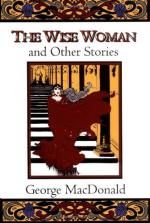|
This section contains 3,186 words (approx. 11 pages at 300 words per page) |

|
SOURCE: “A Kind of Sacrament: Books and Libraries in the Fiction of George MacDonald,” in Studies in Scottish Literature, Vol. 27, 1992, pp. 72-79.
In the following essay, Boice argues that libraries are the most significant settings in MacDonald's fiction.
“Collecting jewels in a rather irregular fashion,”1 is how G. K. Chesterton describes reading the fiction of George MacDonald, whose wordiness is indisputable, but whose literary gems continue to excite interest. Chief among the jewels is a remarkable, often startling use and recurrence of settings, character types, and, especially, symbols. Castles, attic bedrooms, tutors, reflected light, and stairways appear often in MacDonald's novels, and have provoked much speculation and discussion. Also appearing with notable frequency are books and libraries, certainly not the most common of literary settings or symbols. For MacDonald, libraries show up time after time as vitally important settings for his dialogue and action. C. S. Lewis, a...
|
This section contains 3,186 words (approx. 11 pages at 300 words per page) |

|


